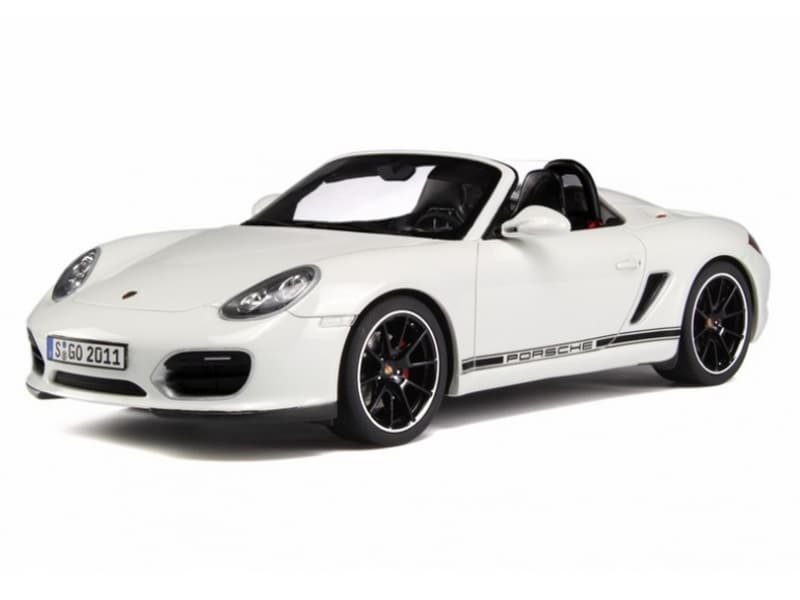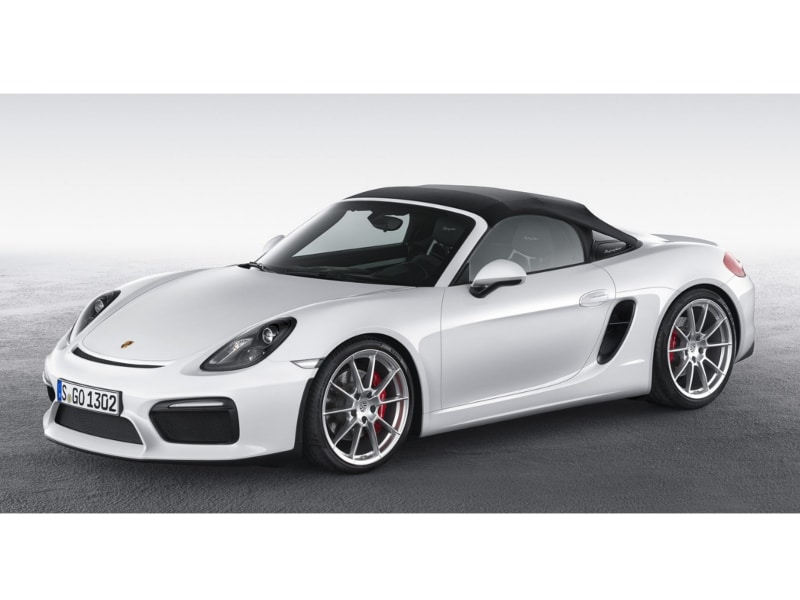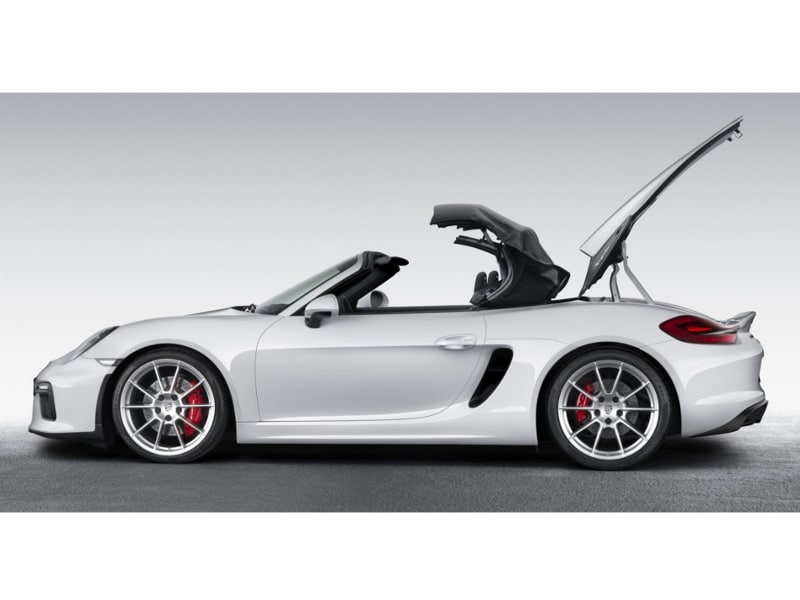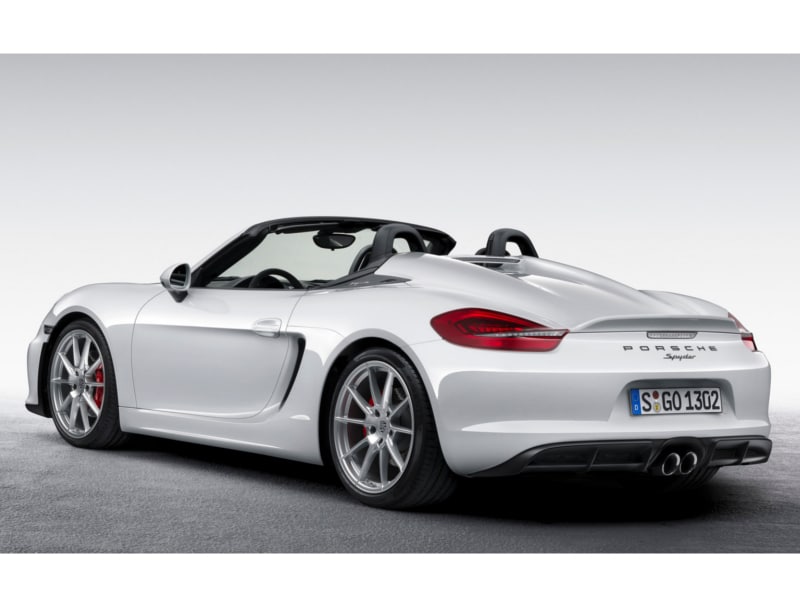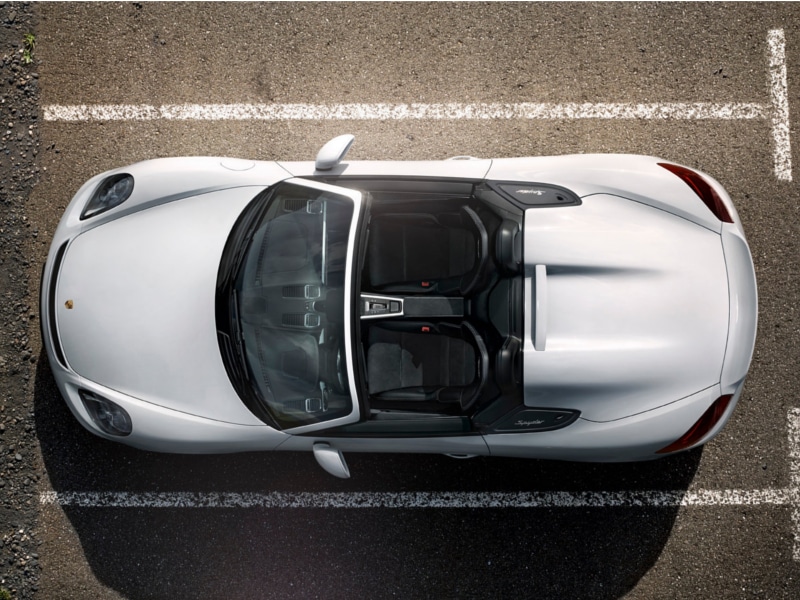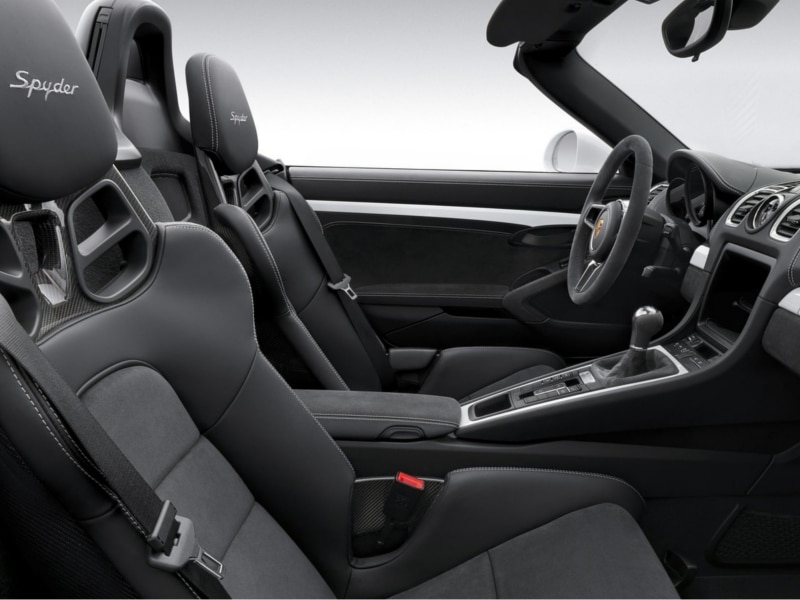Porsche Boxster Spyder RENTAL
A thorough redo of the Boxster is here, though after spending a week with the outgoing Spyder, we have to conclude that nothing needed fixing. A close kin to the Cayman GT4, the Spyder is a limited-production model that borrows the 911’s engine.
It might lack the low-end torque of the boosted 911 engines, but revving the Spyder to its 7600-rpm redline and shifting the six-speed manual is mechanical bliss. Running it hard never feels like abuse. On the contrary, it seems better and happier the harder you push. Its joy becomes your joy.
As previously noted, Porsche’s electrically assisted steering is the best we’ve laid hands on. The Alcantara-wrapped steering wheel provides real feedback. It’s so good it almost feels unassisted. Grip is phenomenal at 1.01 g’s, and the chassis is planted and secure all the way to that point. Likely due to its narrower rear tires, the Spyder is more neutral than the GT4, which only makes it more engaging. We prefer the Boxster Spyder’s chassis setup to the GT4’s, even if the latter has more ultimate grip.
From a dynamics standpoint, the Spyder nears perfection. The top takes more steps and time than the standard Boxster’s, true. But when a car gets you this high, you won’t know or care if the top is up or down. You’ll just want another hit of 7600 rpm.
ABOUT porsche
Ferdinand Porsche founded the company called "Dr. Ing. h. c. F. Porsche GmbH" in 1931, with main offices at Kronenstraße 24 in the centre of Stuttgart. Initially, the company offered motor vehicle development work and consulting, but did not build any cars under its own name. One of the first assignments the new company received was from the German government to design a car for the people, that is a "Volkswagen". This resulted in the Volkswagen Beetle, one of the most successful car designs of all time. The Porsche 64 was developed in 1939 using many components from the Beetle.
Porsche SE was created in June 2007 by renaming the old Dr. Ing. h.c. F. Porsche AG, and became a holding company for the families' stake in Porsche Zwischenholding GmbH (50.1%) (which in turn held 100% of the old Porsche AG) and Volkswagen AG (50.7%). At the same time, the new Dr. Ing. h.c. F. Porsche AG (Porsche AG) was created for the car manufacturing business.
In August 2009, Porsche SE and Volkswagen AG reached an agreement that the car manufacturing operations of the two companies would merge in 2011, to form an "Integrated Automotive Group". The management of Volkswagen AG agreed to 50.76% of Volkswagen AG being owned by Porsche SE in return for Volkswagen AG management taking Porsche SE management positions (in order for Volkswagen management to remain in control), and for Volkswagen AG acquiring ownership of Porsche AG.
As of the end of 2015, the 52.2% control interest in VW AG is the predominant investment by Porsche SE, and Volkswagen AG in turn controls brands and companies such as Volkswagen, Audi, SEAT, Škoda, Bentley, Bugatti, Lamborghini, Porsche AG, Ducati, VW Commercial Vehicles, Scania, MAN, as well as Volkswagen Financial Services.
Dr. Ing. h.c. F. Porsche AG (which stands for Doktor Ingenieur honoris causa Ferdinand Porsche Aktiengesellschaft), as a 100% subsidiary of VW AG, is responsible for the actual production and manufacture of the Porsche automobile line. The company currently produces Porsche 911, Boxster and Cayman sports cars, the Cayenne and Macan sport utility vehicles and the four-door Panamera.
